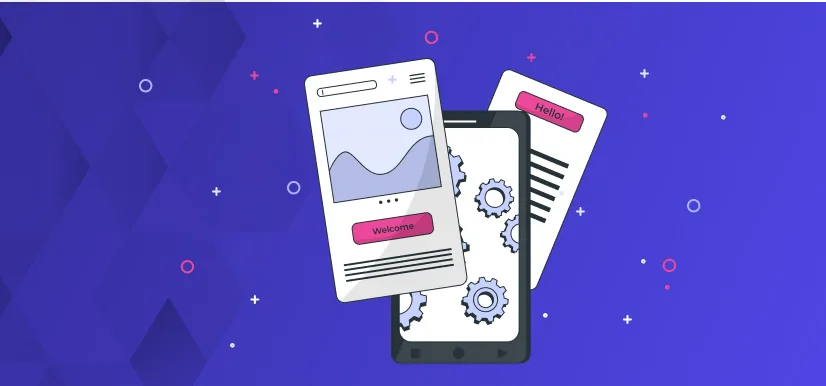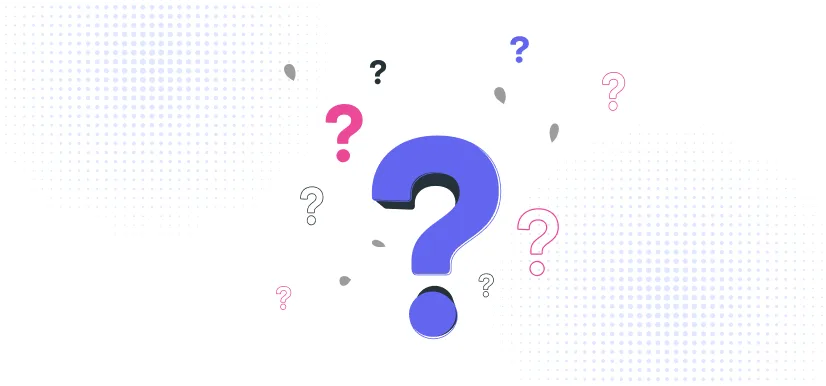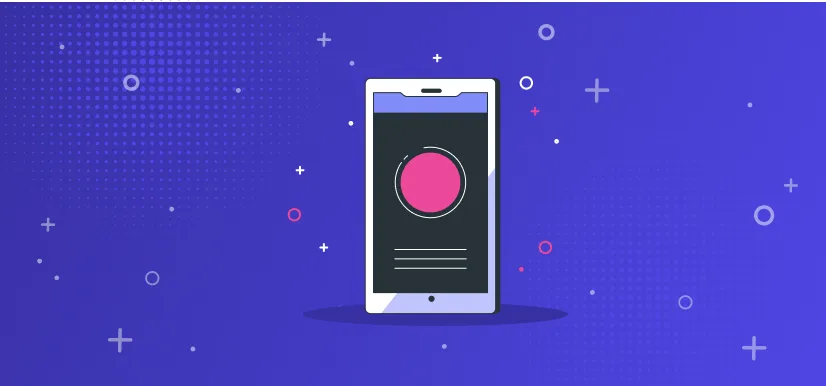- Experimentation,
- Personalization,
- Customer Experience
The Relationship Between Experimentation and Personalization for Customer Experience Optimization


It's no secret that experimentation and personalization go hand-in-hand when it comes to optimizing the customer experience. After all, how can you personalize the experience for your visitors if you don't know what works and what doesn't? Experimentation is essential for uncovering these insights.
But while experimentation and personalization are both important for digital customer experience optimization, they are not one and the same. To help you better understand the difference between these two concepts and how they work together to improve the customer experience, we've put together this helpful blog post.
First, let's define each term. Experimentation refers to the process of testing different versions of your website or app to see which one performs better. On the other hand, personalization is tailoring the experience for each visitor based on their specific needs and preferences.
So how do these two concepts work together?
Experimentation can be used to test different personalized experiences to see which ones are most effective. For example, you might experiment with different messaging or offers to find out which ones convert visitors into customers at the highest rate. Once you've found a winning combination, you can then roll it out as the default experience for all visitors.
It's important to note that experimentation should not be confused with A/B testing, which is a similar but distinct concept. A/B testing refers to the practice of testing two different versions of a web page or app against each other to see which one performs better. With experimentation, on the other hand, you can test multiple variants at the same time. This allows you to gather more data and insights, which can be used to improve the customer experience further.
To sum up, experimentation and personalization are both important tools for customer experience optimization. Experimentation helps you identify what works and what doesn't, while personalization allows you to tailor each visitor's experience.
These two concepts can create a truly personalized and optimized customer experience.
Personalization Is an Ongoing Iteration Process
Personalization is an ongoing iteration process.
And to get it right, you need to experiment.
This means that you'll need to start small, constantly test, and tweak your campaigns in order to find what works best for your audience. The key is never to stop testing and experimenting, as there's always room for improvement.
It's also important to keep track of your results so that you can see what's working and what isn't. This data can help you make informed decisions about future personalization campaigns.
Personalization is an ongoing process, but it's one that can be extremely rewarding. By taking the time to understand your audience and constantly testing and tweaking your campaigns, you can ensure that your personalization efforts are always on point.
Why Experimenting the Personalization Campaigns Are Important
Experimenting the personalization campaigns is important for a number of reasons.
Firstly, by doing so, businesses can fine-tune their marketing approach in order to target their audience better.
Through experimentation, businesses can learn more about their customers and what kind of messaging resonates with them. This, in turn, allows businesses to create more targeted and effective marketing campaigns.
Secondly, experiments allow businesses to see what works and what doesn't in terms of personalization, thus helping them avoid waste of resources.
This is important because it helps businesses avoid wasting resources on approaches that don't work. By experimenting, businesses can focus their resources on methods that are most effective, thus maximizing the efficiency of their personalization campaigns.
Finally, experimentation is essential to improve personalization campaigns' effectiveness over time continuously.
As markets change and new technologies emerge, businesses need to constantly adapt their personalization campaigns to stay ahead of the curve. Experimentation allows businesses to do this by testing new methods and approaches to see what works best.
Overall, experimenting the personalization campaigns is important for businesses because it allows them to target their audiences better, avoid wasting resources, and improve their campaigns over time.
Creating a Winning ‘Experimenting the Personalization Campaigns’ Strategy
As the customer experience landscape continues to evolve, it is becoming more and more important for businesses to focus on experimentation and personalization in order to optimize the customer experience.
So how do you go about creating a winning customer experience optimization strategy that takes both experimentation and personalization into account?
0. Having the Right Mindset: Start with One Audience * One Personalization * One A/B Test
If you're looking to get started with experimenting and a/b testing the personalization campaigns, there's no need to overcomplicate things. In fact, it's best to start small and gradually scale up as you learn what works best for your business.
Here's a quick rundown of how to get started:
Identify one audience that you want to target with a personalization campaign. This could be based on factors like location, demographics, or past purchase history.
Create a single personalized message or offer for this audience. Again, keep it simple to start with - you can always add more complexity later on.
Set up an A/B test to see how effective your personalization campaign is. This will help you understand what works and what doesn't so that you can improve your results over time.
Of course, this doesn't mean that you should never experiment with more than one audience or more than one personalization campaign. But starting small will give you a solid foundation on which to build.
By keeping things simple at first, you can gradually scale up and experiment with different approaches until you find what works best for your business.
Now let's look at this strategy in detail:
1. Define Your Most Valuable Audience Segment
When it comes to experimentation and personalization, your most valuable audience segment is key. This is the group of people that you want to target with your efforts in order to see the biggest impact and ROI.
When defining your most valuable audience segment, there are a few things to consider. First, think about who your ideal customer is. What are their demographics? What do they like and dislike? What are their purchasing habits?
Next, consider what type of relationship they have with your brand. Are they first-time visitors or returning customers? Do they frequently engage with your content or rarely visit your website?
Once you understand who your ideal customer is, you can begin to narrow down your focus. For example, if you sell women’s clothing, you might want to focus on female shoppers who are between the ages of 25 and 34. Or, if you’re a B2B company, you might want to target businesses with under 100 employees.
The important thing is to be as specific as possible when defining your most valuable audience segment. The more targeted your efforts are, the more likely you are to see success.
2. Create Personalized Content Variants for This Audience Segment
Creating personalized content variants for the most valuable audience segment is an important step in creating a winning experimentation and personalization strategy. By tailoring content to this group's specific needs and interests, you can more effectively engage them and drive conversions.
There are a few key things to keep in mind when creating personalized content variants for your most valuable audience segment:
Know who your most valuable audience segment is. This may seem like a no-brainer, but it's important to clearly understand who your most valuable customers are before you can start creating personalized content for them. Take time to segment your audience and identify the characteristics that define your most valuable group.
Understand what they want. Once you know your most valuable audience segment, you need to understand what they want. What are their needs and interests? What kind of content will resonate with them? Taking the time to understand your audience will help you create content that is more likely to appeal to them.
Create multiple variants. Don't just create one piece of personalized content and call it a day. Create multiple content variants so you can test different approaches and see what works best for your audience. By creating multiple versions of your content, you can optimize your strategy over time and ensure that you're always providing the best possible experience for your customers.
(Ps: We’ll be revisiting this part in the step 4: “Create and Run Your A/B Tests for Personalization Campaigns.”) Test, test, test. Personalization is all about testing and experimentation. Don't be afraid to try new things and see what works best for your audience. The only way to truly know what resonates with your customers is to test different approaches and see how they respond.
3. Run the Personalization Campaign and Gather Data
Now that you have your personalization campaign in place, it's time to put it into action. This means running your personalization campaigns and collecting data about their performance.
Once the campaign is up and running, monitor it closely. This will help you see how it's performing and make changes as needed.
Throughout the campaign, collect data about the campaign's performance. This data will be essential in evaluating the success of the campaign.
4. Create and Run Your A/B Tests for Personalization Campaigns
Now that you have your personalization strategy in place, it's time to create and run your A/B tests. This is an essential step in ensuring that your personalization campaigns are effective and achieve the desired results.
There are a few key things to keep in mind when creating and running your A/B tests:
Make sure you have a clear hypothesis for each test. What are you trying to achieve with this test? What is the expected outcome? Having a clear hypothesis will help you properly measure your test results.
Keep your audience in mind. Who are you targeting with this campaign? Make sure your test reflects the needs and wants of your target audience.
Keep it simple. Don't try to test too many things at once. Test one element at a time so you can accurately measure the results.
Be patient. A/B tests can take some time to run. Allow enough time for your test to reach statistical significance before making any decisions about your campaign.
5. Monitor and Analyze Your Results
After you've run your A/B test and collected data, it's time to analyze the results. This will help you determine whether your new version was successful and, if so, how much of an improvement it was over the original.
There are a few different ways to analyze A/B test results. The most important thing is to make sure you're looking at the right metrics. For example, if you're testing a new checkout flow, you'll want to look at the conversion rate and average order value.
6. Repeat the Previous Steps with Learnings for the New Audience Segments
As you experiment and personalize your content for different audience segments, you will undoubtedly learn new things about what works and what doesn't. Be sure to take these learnings into account as you move on to creating content for new segments.
By repeating the previous steps with the new information you've gathered, you'll be able to create an even more effective experimentation and personalization strategy that will help you better connect with your audience.
Adopt an Experimentation Mentality to Your Personalization Campaigns
When it comes to personalization, don't be afraid to experiment. Try different approaches and see what works best for your audience. There is no one-size-fits-all solution, so find what works best for you and your customers.
Be sure to track your results so you can optimize your campaigns over time. Personalization is an ever-evolving field, so it's important to stay up-to-date on the latest trends and best practices.
By adopting an experimentation mentality, you'll be able to fine-tune your personalization campaigns and deliver the best possible results for your business.
Composable Headless Personalization and Experimentation with Ninetailed
Our platform enables businesses to create and deploy personalized experiences at scale quickly.
Our approach uses microservices, APIs, and headless architecture to keep your tech stack modular, and our headless CMS connections allow you to easily manage your personalized content variations. This makes it easy for you to test different personalized experiences and deploy them quickly.
Our tool is the perfect solution for businesses that want to provide a personalized experience for their customers while keeping their tech stack flexible. We make it easy for you to test different experiences and deploy them quickly, so you can focus on providing the best experience for your customers.
If you're looking for a solution that will enable you to provide a personalized experience for your customers while keeping your tech stack flexible, Ninetailed is the perfect solution. Our easy-to-use solution makes it simple to test different experiences and deploy them quickly, so you can focus on providing the best experience for your customers.
Ninetailed can help you with personalization and experimentation for MACH architectures by providing the services, tools, and results that will move your business forward.
Get in touch to learn how Ninetailed personalization, experimentation, and insights works inside your CMS

